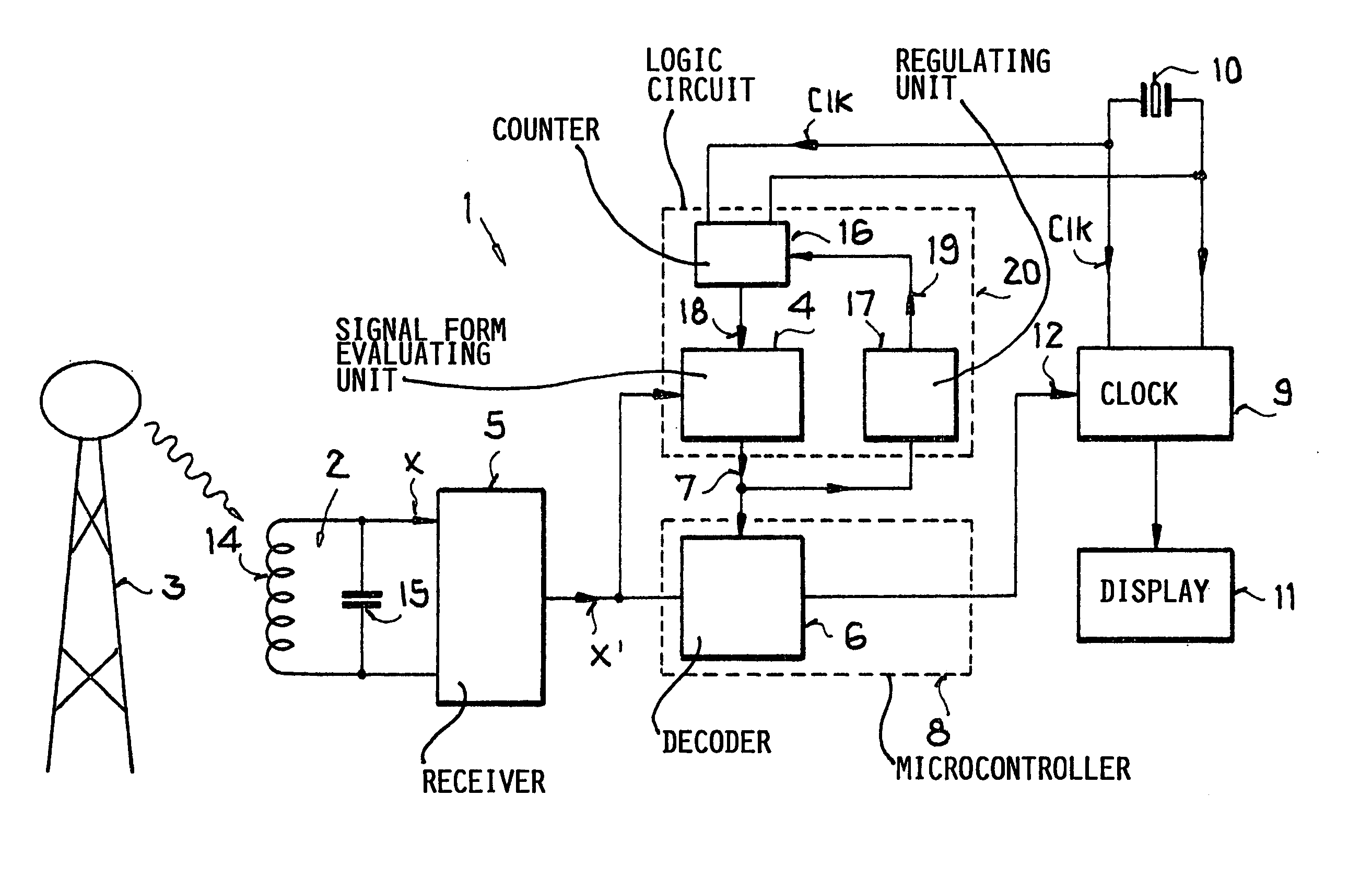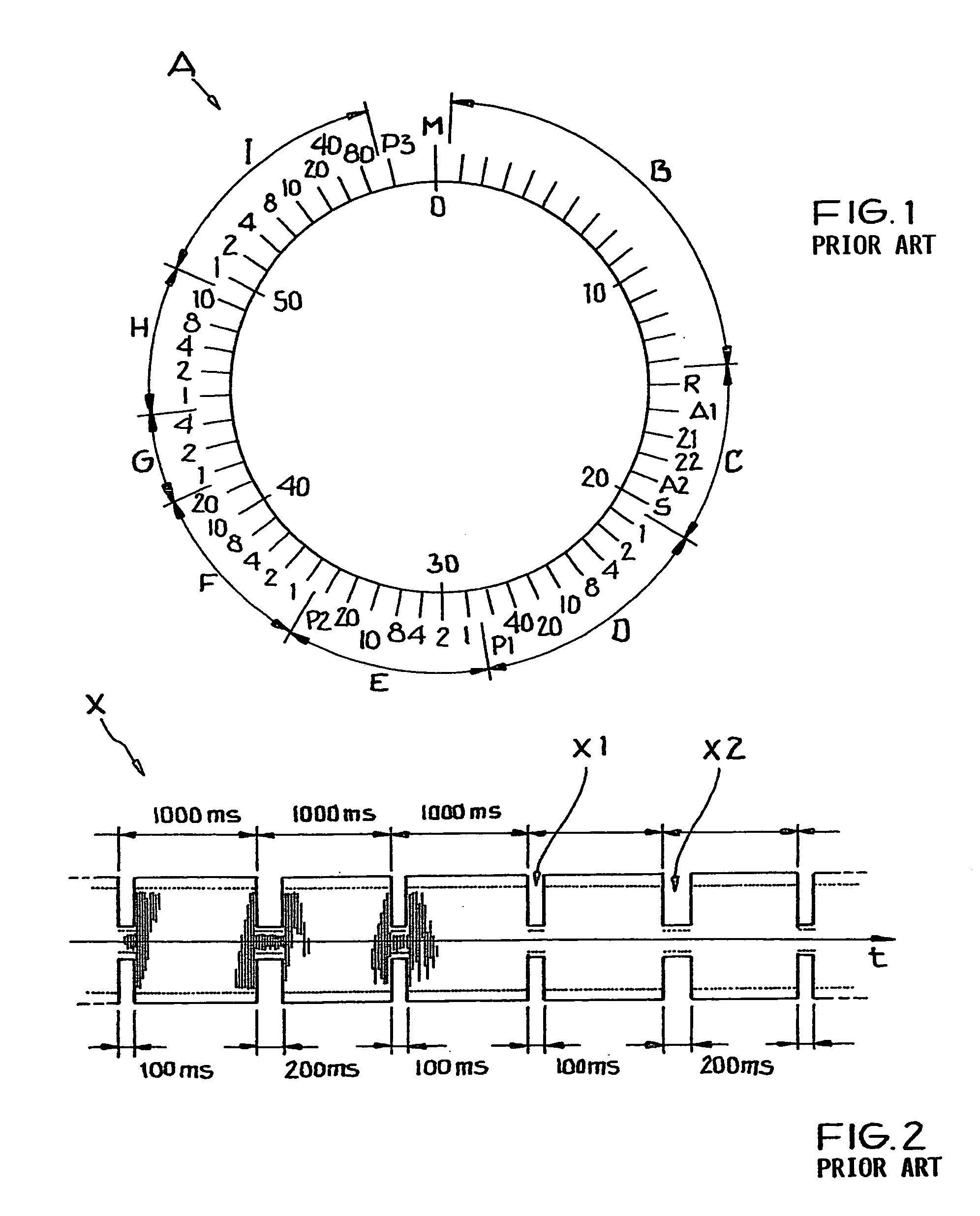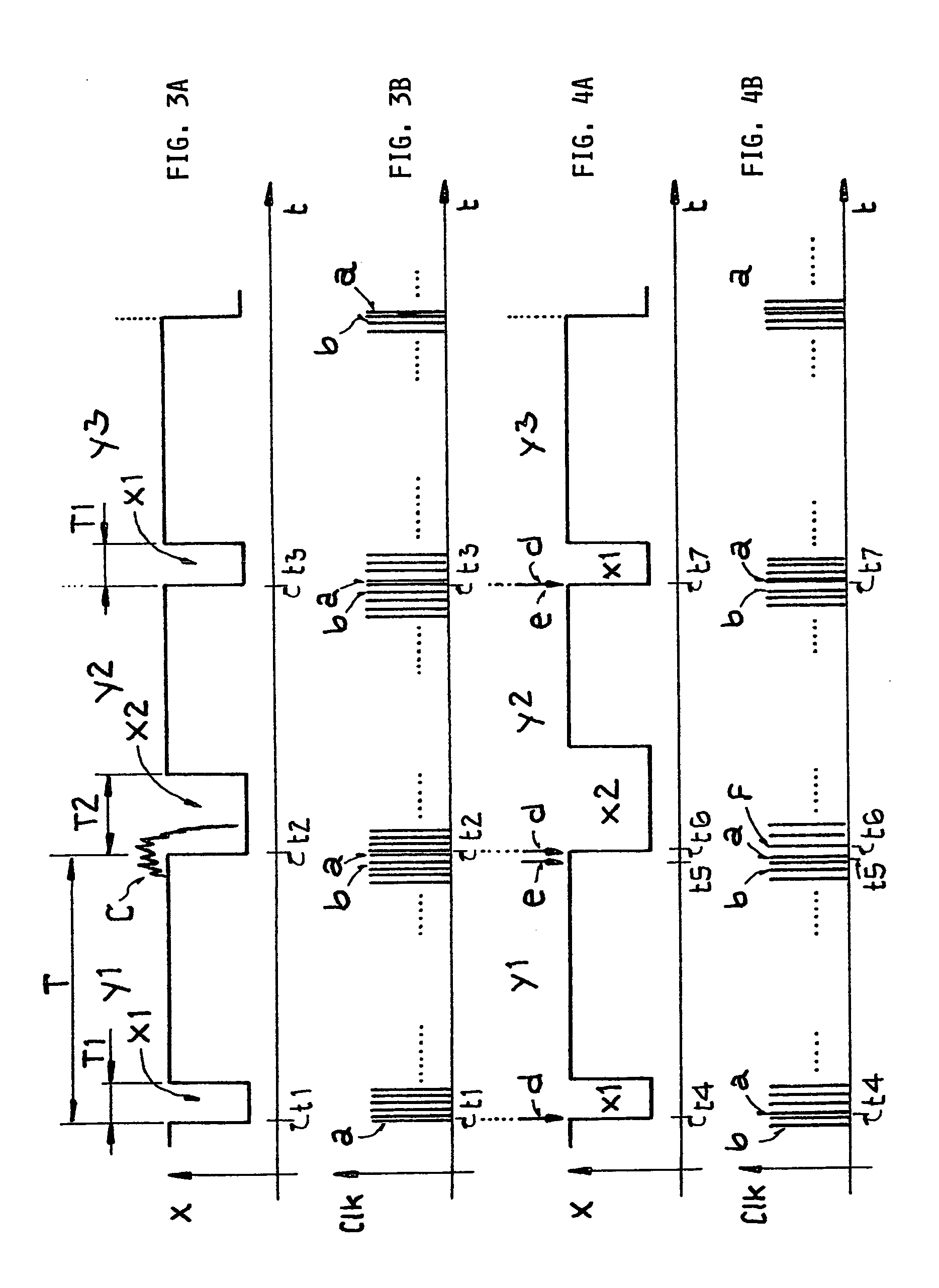[0033] A further particular
advantage of the invention thus exists in providing a simple regulating arrangement for compensating any possibly occurring offset using only previously existing circuit components and the like. In order to compensate an inexact start and thus deviations of the reference clock from a prescribed
time marker (for example the second beginning) of the received time signal, the invention provides a compensation circuit that followingly regulates or regulates-out this deviation. Such a regulation operates as follows. If, for example, in a
time frame being considered, the actual second beginning occurs earlier than the calculated second beginning, then for determining the second beginning in one of the subsequent time frames at least one clock pulse is skipped (or omitted or not considered), so that the second beginning calculated for this time frame is advanced by the
time duration of one clock pulse. On the other hand, if the calculated second beginning comes after the actual second beginning, then an additional clock pulse is inserted for at least one of the subsequent time frames, so that the second beginning calculated for the corresponding time frame is delayed by the duration of one clock pulse or cycle. In this manner, a very simple regulation can be implemented.
[0034] The receiver circuit, or the corresponding radio-controlled clock having such a receiver circuit, according to the invention, advantageously have a higher
system sensitivity, because interferences at the beginning of a respective time frame are not taken into consideration. Falsifications of the
time duration of the amplitude variation can advantageously be avoided by the regulating arrangement described above. Thus, the rate of occurrence of errors due to falsified time durations of an amplitude variation caused by interference pulses is significantly reduced, which ultimately leads to a greater sensitivity of the receiver circuit. The above described purely digital regulation for the compensation of an offset or a deviation in the determination of the second beginning makes
external circuit components and tolerance-influenced analog circuit parts superfluous. In this manner, the
advantage gained through the above described regulation or compensation is not again eradicated through tolerances of the circuit components. Moreover, the receiver circuit may additionally be relatively simply implemented, because the purely digital regulation can be carried out, for example, by the micro-controller that is present anyway in the radio-controlled clock. The regulation itself requires a relatively small computational effort, so that the other functioning of the micro-controller is only insignificantly impaired by additionally carrying out the regulation.
[0035] For determining the second beginning of a time frame, advantageously the time counting by the counter is carried out from the second beginning of the immediately, i.e. directly, preceding time frame. This is especially recommendable in terms of the circuit technology, because the counter in this case can again be reset and newly restarted respectively at the end of each time frame. This makes it possible to use a simple low bit counter.
[0036] When a time signal is received for the first time, an actual second beginning is at first not known. However, as described above, in order to determine the second beginning of subsequent time frames according to the invention, an actual second beginning must at first be determined at least one time, and thereafter the subsequent second beginnings of subsequent time frames can be determined, i.e. calculated, according to the invention. For this purpose, the beginning of a first change or variation of the received time signal is at first determined. Then, the duration of a signal amplitude variation is counted-up by the counter. In this regard, the duration of the amplitude variation must be one of only a few possible prescribed durations, and is known from the telegram of the time signal. In this manner, by comparing the detected signal amplitude variation to the known duration, it can be ensured that this first signal amplitude variation is not simply (and falsely) an interference in the time signal. If this has been unambiguously recognized and determined, and a second new amplitude variation of the signal course of the time signal occurs after approximately 1 second following the beginning of the first signal amplitude variation, then the detected beginning of the second new variation is valued or taken (i.e. specified) as a true or actual second beginning. Additionally or alternatively, a method as disclosed in the above mentioned Patent Publications DE 195 14 036 C2 or DE 37 33 965 C2 can be used for determining the first actual second beginning.
[0037] Advantageously, the
time duration of a time frame is determined by counting the clock pulses of a reference
clock signal. This reference
clock signal has a known, i.e. prescribed, reference frequency. A
clock signal or timing pulse signal with the most constant possible prescribed clock frequency is advantageously used as the reference clock signal or timing pulse signal, which thus has a prescribed number of clock pulses or timing pulses per time frame.
[0038] The reference clock signal is preferably a clock signal or timing pulse signal in which the duration of each timing pulse or clock cycle ideally is less than 10% of the duration of the shortest signal amplitude variation prescribed by the telegram of the time signal, i.e. the temporally shortest second marker. Thus, there will be at least ten clock pulses of the reference clock signal during the duration of the shortest
signal variation representing a second marker. Ideally and most preferably, the duration of the reference clock cycle amounts to less than 5% of the duration of the shortest time
signal variation. For example, if a reference clock signal with a reference frequency of 128 Hz is used (this corresponds to approximately the {fraction (1 / 256)}th portion or fraction of the frequency of a
quartz clock oscillator), and if a time frame amounts to approximately one second, then the counter will have to count-up exactly 128 clock pulses or cycles for determining the timed or calculated second beginning of the next successive time frame. In that regard, a single clock pulse or cycle corresponds to about 7.8 ms.
 Login to View More
Login to View More  Login to View More
Login to View More 


